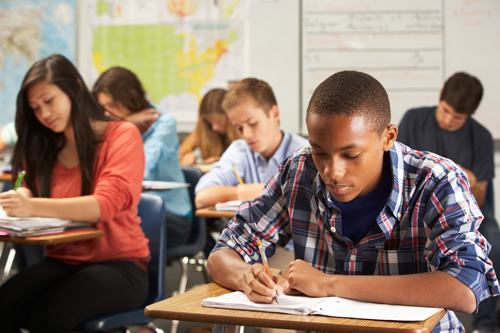In today’s interconnected globe, pupil areas play a critical role in shaping scholastic and individual experiences.
These neighborhoods are not just collections of people however are vibrant ecosystems that cultivate development, learning, and collaboration amongst pupils. They differ commonly in form and function, from campus-based groups to international on the internet forums, each offering distinct opportunities for interaction and development.
Whether you are stepping onto a college campus for the first time or taking part in digital understanding atmospheres, comprehending the structure and benefits of pupil neighborhoods can considerably enhance your academic journey. This write-up delves into the essence of student communities, discovering exactly how they work, the advantages they give, and the ways in which they can be leveraged for personal and scholastic success.
Understanding Student Areas
Pupil neighborhoods are foundational to the scholastic experience, serving as both social and educational support systems. At their core, these communities are groups developed naturally by students who share usual passions, objectives, or fields. They can be informal, such as study groups, or formal, like student unions and clubs.
These areas are characterized by a common identification and the cumulative search of expertise, skills, and experiences. They serve as systems for trainees to connect, collaborate, and add to each other’s growth, expanding past scholastic borders to influence personal advancement and neighborhood interaction.
Fundamentally, pupil neighborhoods are microcosms of larger social frameworks, where management abilities are sharpened, ideas are traded, and lifelong friendships are formed. The interactions within these areas mirror a varied blend of social, intellectual, and social dynamics.
- Networking Opportunities: Student neighborhoods supply a network of peers and mentors who can use support and advice.
- Ability Advancement: Engaging in neighborhood tasks aids pupils create necessary skills such as interaction, leadership, and teamwork.
- Source Accessibility: These neighborhoods commonly supply access to academic resources, including research materials and professional advice.
- Social Involvement: They provide a system for social interaction, alleviating the change into brand-new academic settings and assisting to deal with seclusion.
Through these different features, student areas become important to the holistic advancement of pupils, laying a foundation for future expert and individual success.
The Benefits of Engaging in Pupil Communities
The benefits of joining pupil neighborhoods are multifaceted, affecting both scholastic and personal balls.

On a scholastic level, these areas encourage joint understanding, enabling students to benefit from diverse perspectives and experience. Sharing knowledge and sources within a community can result in a lot more reliable learning outcomes and boosted academic performance.
In addition, pupil areas supply a platform for individual development and self-discovery. By involving with peers from various backgrounds and self-controls, pupils get a wider worldview, improving their cultural proficiency and compassion. This direct exposure to diverse perspectives is very useful in creating vital thinking and analytical abilities.
In addition, active participation in neighborhood activities can increase trainees’ self-confidence and self-esteem. Taking on leadership roles or participating in discussions and events promotes a feeling of success and belonging, which is crucial for general wellness and motivation.
Kinds Of Pupil Communities
Pupil neighborhoods can be found in numerous forms, each catering to various passions and objectives. These can be generally classified right into scholastic, cultural, recreational, and professional areas, among others. Each type provides special systems and possibilities for student interaction.
- Academic Communities: These are typically focused around details fields or academic passions. Instances include study groups, honors societies, and departmental clubs.
- Social Areas: These groups concentrate on advertising cultural awareness and diversity, typically organizing occasions and tasks to commemorate different practices.
- Entertainment Neighborhoods: These include sports teams, leisure clubs, and hobby-based teams that offer a break from scholastic roughness and advertise physical and mental health and wellness.
- Professional Communities: These are aimed at profession development, offering networking chances, workshops, and mentorship programs to prepare pupils for the expert world.
By recognizing and engaging with the best neighborhoods, trainees can tailor their college experiences to align with their interests and occupation goals, paving the way for a fulfilling scholastic trip.
Constructing a Prospering Student Neighborhood
Creating and preserving a growing student area requires effort and collaboration from both trainees and educational institutions. It starts with cultivating a comprehensive atmosphere where all students really feel invited and valued no matter their backgrounds.
Institutions can support this by supplying resources and centers that motivate interaction and participation. This consists of creating physical areas like trainee unions and on the internet platforms that help with communication and cooperation. In addition, organizing occasions, workshops, and workshops can further enhance interaction, giving students with chances to link and gain from each other.
Leadership and Student Participation
Efficient management is essential in nurturing an effective student area. Management duties within these neighborhoods offer students an opportunity to develop and show their business and interpersonal skills. Students that assume these functions contribute dramatically to setting the tone and instructions of their neighborhoods, affecting their peers favorably.
Motivating management student community and energetic participation among students not just strengthens the area yet likewise equips individuals, preparing them for future obstacles. By promoting a culture of collaboration and assistance, pupil communities can grow, leaving a long lasting influence on their members and the academic atmosphere in its entirety.
